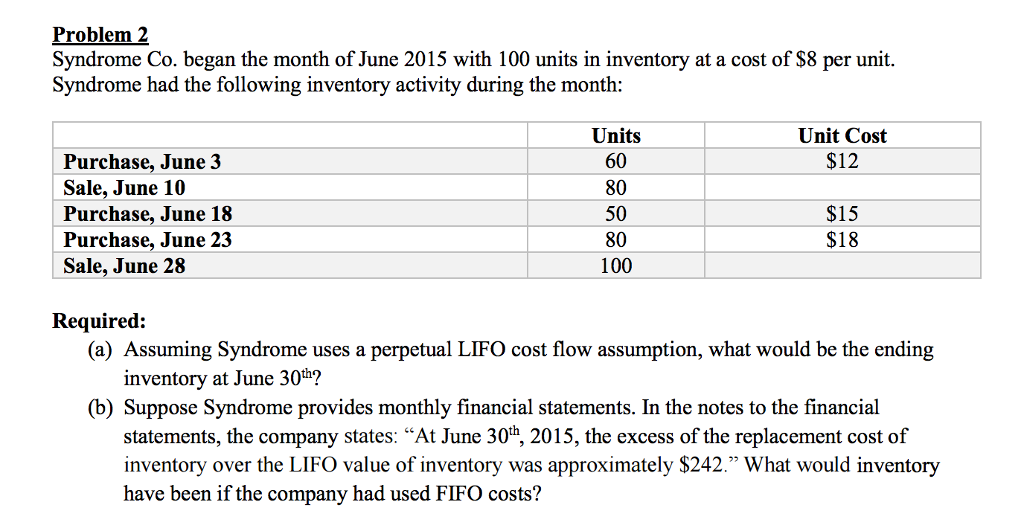Question
Related to the previous problem , Syndrome estimates the selling price of its inventory to be $20 per unit, with a cost to sell of

Related to the previous problem, Syndrome estimates the selling price of its inventory to be $20 per unit, with a cost to sell of $3 and normal profit margin of $8. The current replacement cost is $7. Assume the company uses the cost-of-goods-sold method of reducing inventory to market when necessary (i.e. debit COGS directly for the write-down).
Required: (a) What amount should the company report as total ending inventory on the balance sheet as of June 30, 2015?
(b) What amount should the company report as total COGS on the income statement for the month ended June 30, 2015? (Remember that Syndrome provides monthly financials.)
Problem 2 Syndrome Co. began the month of June 2015 with 100 units in inventory at a cost of $8 per unit. Syndrome had the following inventory activity during the month: Units Unit Cost $12 60 Purchase, June 3 Sale, June 10 80 S15 Purchase, June 18 50 80 $18 Purchase, June 23 Sale, June 28 100 Required (a) Assuming Syndrome uses a perpetual LIFO cost flow assumption, what would be the ending inventory at June 30th? (b) Suppose Syndrome provides monthly financial statements. In the notes to the financial statements, the company states: "At June 30th, 2015, the excess of the replacement cost of inventory over the LIFO value of inventory was approximately $242." What would inventory have been if the company had used FIFO costsStep by Step Solution
There are 3 Steps involved in it
Step: 1

Get Instant Access to Expert-Tailored Solutions
See step-by-step solutions with expert insights and AI powered tools for academic success
Step: 2

Step: 3

Ace Your Homework with AI
Get the answers you need in no time with our AI-driven, step-by-step assistance
Get Started


